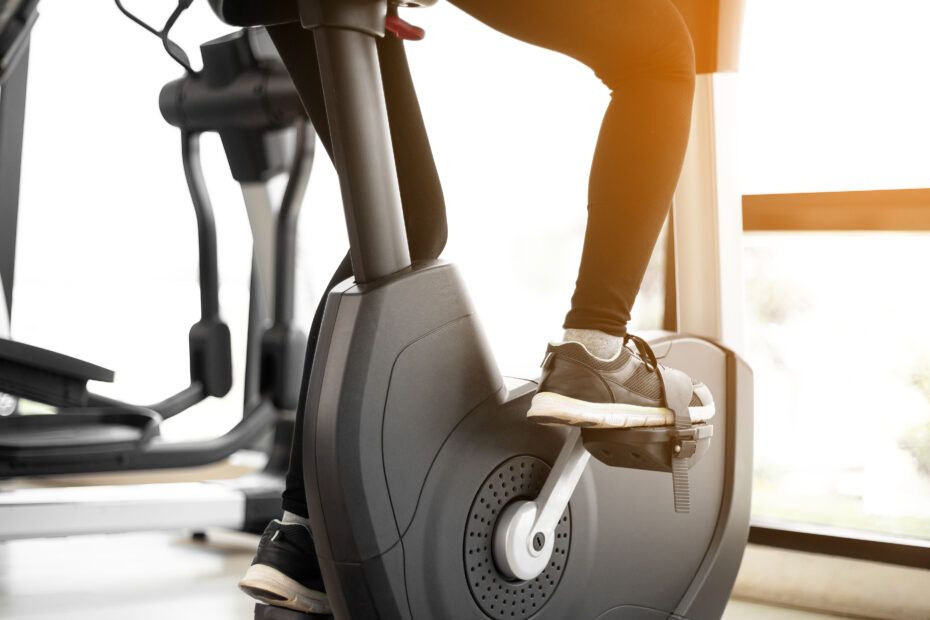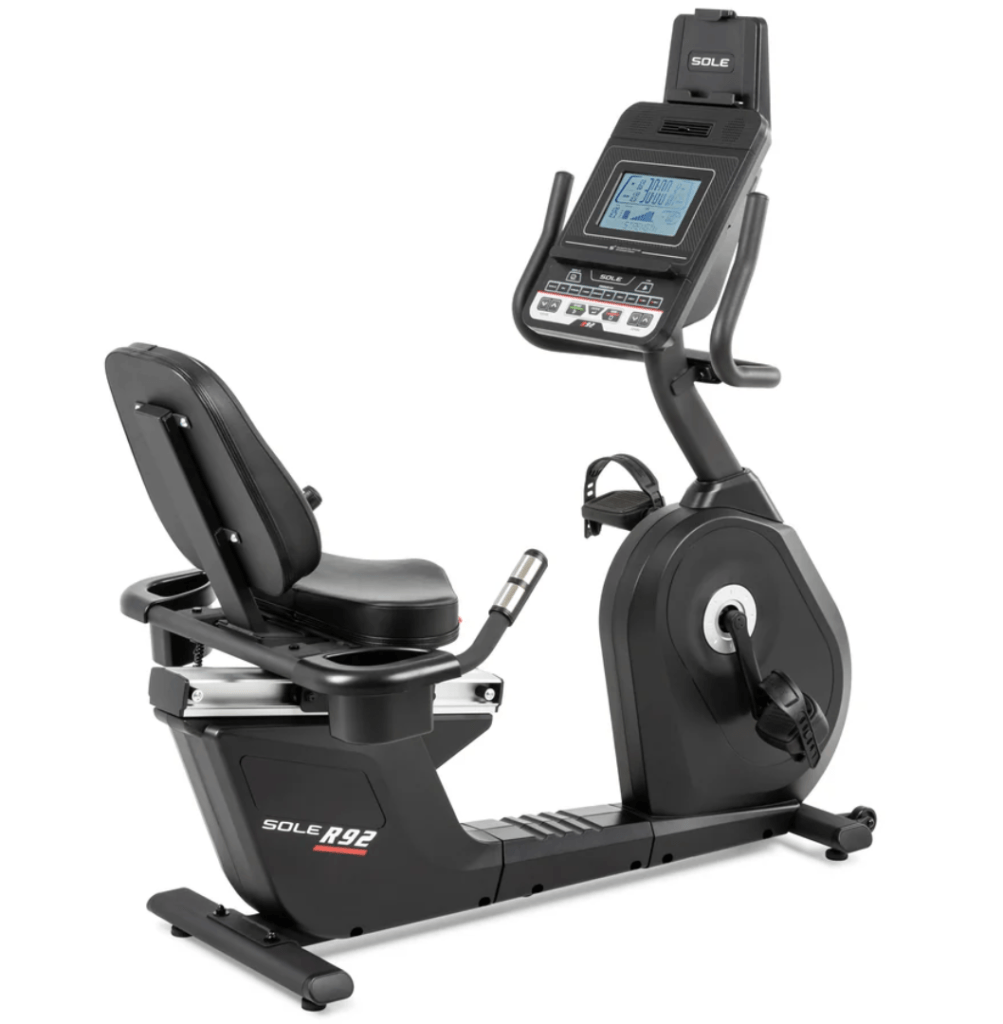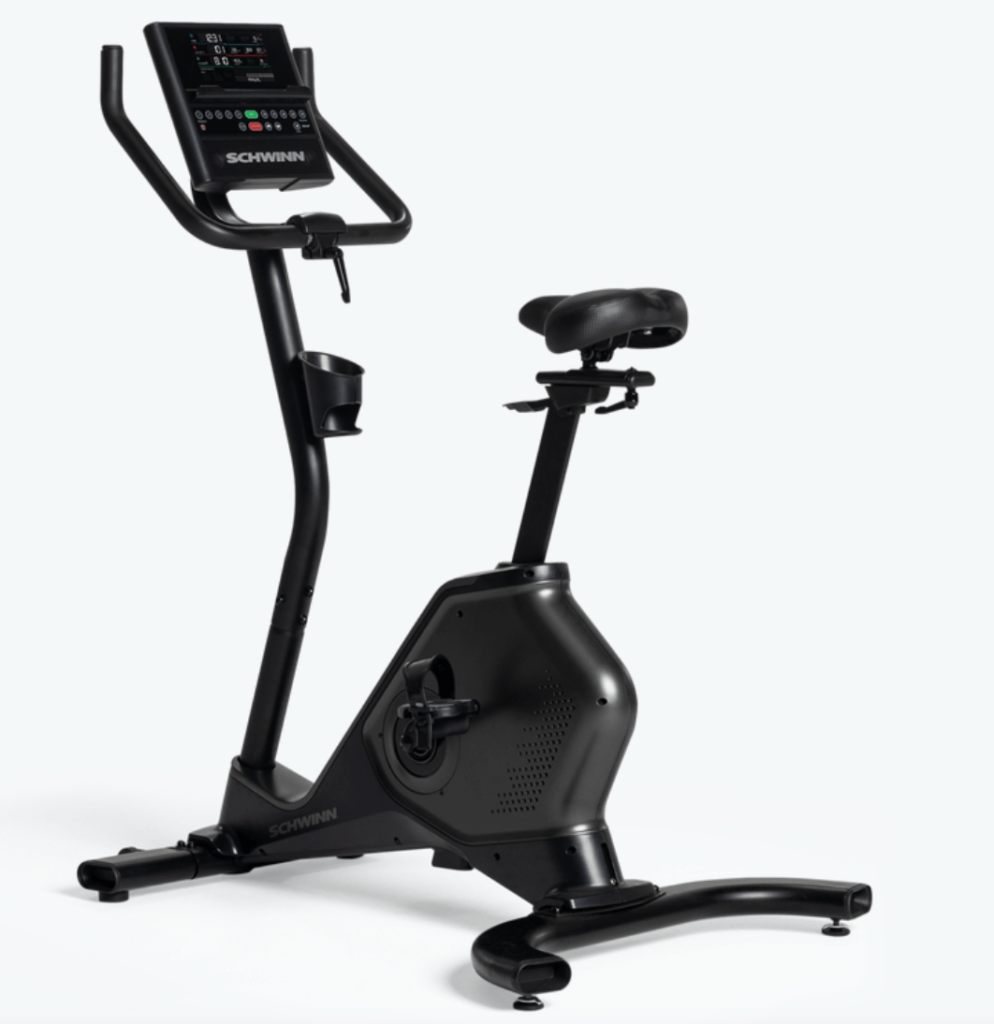Exercise bikes are a great way for seniors to stay active and improve cardiovascular health, all while taking it pretty easy on the joints.
These days, seniors have a lot of different kinds of exercise bikes to choose from, but recumbent and upright bikes tend to be the most popular.
Each type offers distinct advantages and potential drawbacks, so understanding these differences is key to making the right decision.
And it just so turns out that’s exactly what we’re here to discuss.
In this comprehensive guide, we’ll go over everything seniors need to know about recumbent and upright exercise bikes, including the key differences and which bike would work best in certain situations.
After reading, you’ll know exactly which style of exercise bike is best suited for your household.
What’s a Recumbent Bike?
A recumbent bike is a stationary exercise bike that has a reclined seat with back support.
The pedals are positioned in front of the body and the user sits in a laid-back, semi-reclined position (fyi, ‘recumbent’ means reclined).
This design distributes weight more evenly across the body, offering comfort and reducing pressure on the knee and hip joints.
Recumbent bikes usually come with large back rests, offering a lot more trunk support than other kinds of exercise bikes.
This makes them a popular choice for seniors because they tend to be a lot more comfortable to sit on, especially during longer workouts.
Recumbent bikes also come with low, step-through frames, which makes them easy to access from either side of the machine – a great perk for seniors with mobility issues.
Key Benefits of Recumbent Bikes for Seniors
Like any other kind of fitness equipment, all recumbent bikes aren’t created equal, so quality and features will vary depending on the model.
But in general, seniors can expect the following perks when using a recumbent bike:
- Joint-Friendly & Low-Impact: Recumbent bikes provide a low-impact workout, putting minimal stress on the knees, hips, and lower back. The reclined position is ideal for those with arthritis or joint pain, as it eases the strain on weight-bearing joints.
- Back and Spine Support: The large, cushioned seat and backrest provide excellent support for the lower back and spine, reducing the risk of discomfort or injury.
- Safety and Stability: The stable, wide base of the recumbent bike makes it easier for seniors to get on and off, reducing the risk of falls. Many models also have handles positioned beside the seat for additional balance support.
- Perfect for Extended Workouts: The comfort provided by the recumbent bike allows seniors to engage in longer, more sustained workouts without feeling discomfort.
- Ideal for Rehabilitation: Due to their gentle design, recumbent bikes are commonly used in physical therapy to help seniors recover from injury or surgery. They also work great for seniors dealing with arthritis because the gentle, continuous pedaling motion can help make stiff, achy joints feel better.
Potential Downsides of Recumbent Bikes
Recumbent bikes are great, but they aren’t perfect. Here are a few potential drawbacks seniors may notice when using recumbent bikes:
- Less Intensity: The reclined sitting position engages fewer core muscles compared to upright bikes, resulting in less intensity.
- Larger Size: Recumbent bikes tend to take up more floor space, which can be a consideration if you have limited room at home (your average recumbent bike takes up a footprint of roughly 5′ x 2.5′)
What’s an Upright Bike?
An upright exercise bike is what most folks likely picture when they think of a stationary bike.
Upright bikes more closely resemble traditional outdoor bicycles, as they have the user sitting in a more traditional, upright position.
The pedals are positioned directly below the user and the seat is smaller and lacks a backrest.
Users are seated upright and may lean slightly forward while holding onto handlebars, similar to riding a bike outside.
Compared to recumbent bikes, upright bikes usually come with smaller seats which aren’t quite as comfortable.
That said, upright bikes are still usually more comfortably than indoor cycles, which give the rider the most realistic experience of riding a road bike.
Regardless, having the pedals located directly below the rider gives the same general feel of riding a real bicycle.
It also puts a little more stress through the hips and knees.
And the lack of a back rest forces the core muscles to work a little harder, but it can also make these bikes less comfortable for folks with achy backs.
Key Benefits of Upright Bikes for Seniors
Like recumbent bikes, upright bikes can make great choices for seniors, especially ones looking for a more realistic riding experience.
Here are some of the perks seniors can expect from using an upright exercise bike:
- More Intense Workout: Because upright bikes engage the core more during use, they tend to offer a more intense workout. Seniors looking to challenge themselves may find this style appealing.
- Compact Design: Upright bikes are often smaller and more space-efficient than recumbent bikes, making them ideal for seniors with limited space (your average upright bike takes up a footprint of roughly 4′ x 2.5′).
- Improves Balance: While using an upright bike, seniors need to balance their weight, which can improve core stability and coordination over time.
- Varied Workout: Upright bikes allow for standing up and pedaling, which adds a different level of intensity and variety to workouts. This can be a great option for seniors looking to incorporate interval training into their routine.
Potential Downsides of Upright Bikes
Upright bikes take up less space and may be able to provide a little more intensity, but they have their downsides too:
- Less Comfort: The smaller seat and lack of back support may cause discomfort, especially for seniors with lower back issues or joint pain.
- More Joint Stress: Because the body weight is distributed differently, upright bikes can put more pressure on the knees, hips, and wrists, which may not be ideal for seniors with arthritis or joint sensitivity.
- Balance and Safety Concerns: Seniors with balance issues may find the upright bike more challenging to get on and off, increasing the risk of falls.
Key Differences Between Recumbent and Upright Bikes
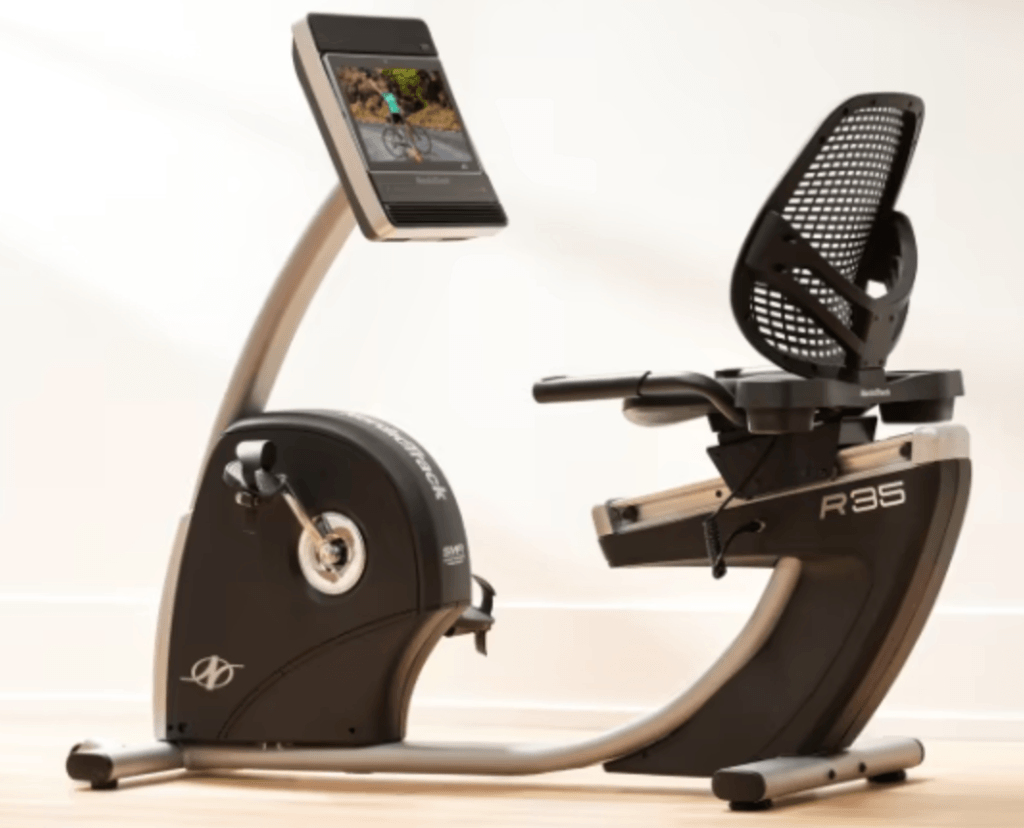
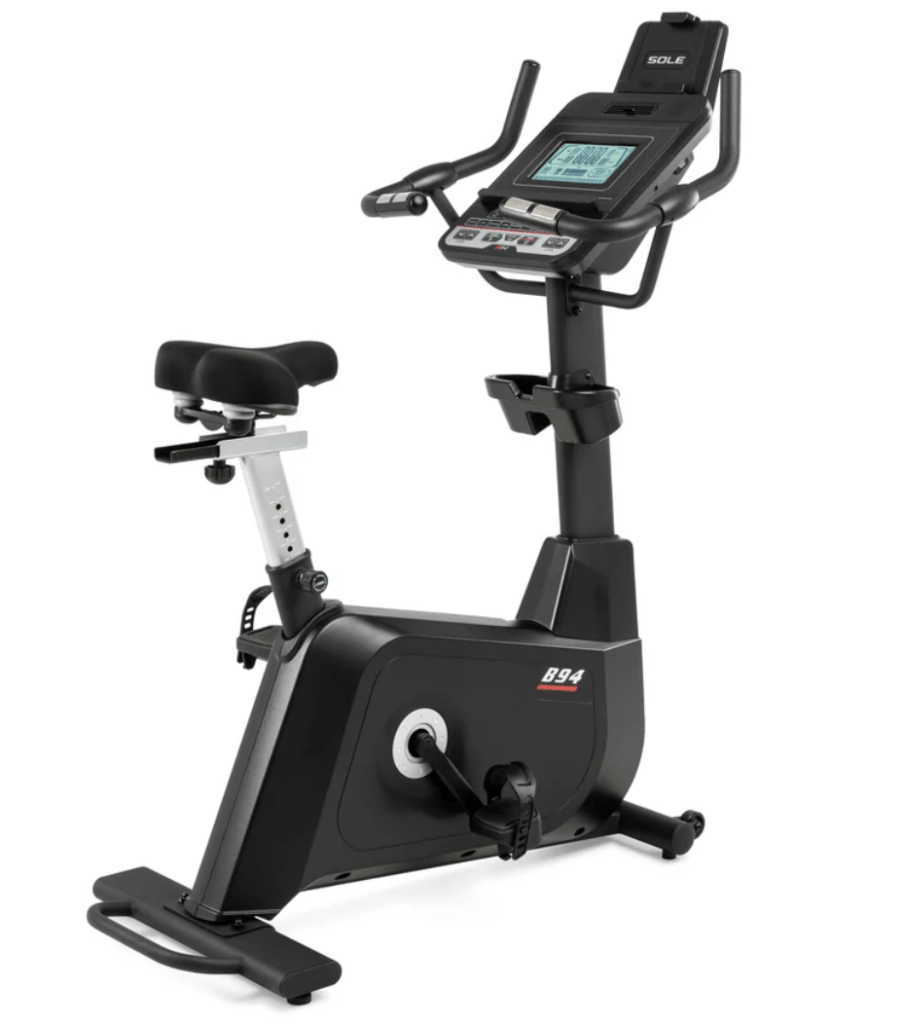
| Feature | Recumbent Bikes | Upright Bikes |
|---|---|---|
| Seating Position | Reclined with back support | Upright, similar to traditional bicycle |
| Joint Impact | Low impact, easier on knees and hips | A little more impact, a bit more stress on joints |
| Comfort | High, with large cushioned seat and backrest | Moderate, smaller seat, no backrest |
| Muscle Engagement | Primarily lower body | Lower body as well as core |
| Workout Intensity | Lower, great for long, steady-state exercise | Moderate, suitable for more intense training |
| Size and Space | Larger, requires more space | Compact, suitable for smaller spaces |
| Safety | Stable and easy to mount/dismount | Requires more balance and coordination to get on/off |
| Best For | Seniors with joint pain, arthritis, or rehab needs | Seniors looking for more challenging workouts |
What About Cost?
Realistically speaking, I realize cost is about as important as any other consideration when deciding on a new piece of fitness equipment, so I want to make sure we address this point as well.
Fortunately, when it comes to recumbent and upright exercise bikes, there isn’t a big difference in price.
Recumbent and upright bikes both come in various price ranges, ranging from really budget-friendly models that only cost a couple hundred bucks to high-end commercial bikes that cost several thousand dollars.
This is true for both styles of bike, so regardless of your budget, you should still be able to find choices for both kinds of bike.
Generally speaking though, recumbent bikes tend to cost ~$100 – $200 more than upright bikes.
Which makes sense I guess, considering they’re larger and require a little more material to make.
But again, there’s very little difference between these bikes when it comes to overall cost.
Which Bike is Right for You?
Ok, that about does it when it comes to reviewing all the key differences between recumbent and upright exercise bikes.
Before we wrap things up here though, I want to offer some suggestions based on specific situations to help seniors with the decision making process.
Choose a Recumbent Bike If:
- You experience joint pain, arthritis, or back problems
- Comfort and support are your top priorities
- You’re looking for a lower-impact, safe workout option
- You need a bike that’s easy to get on and off
- You are recovering from an injury or surgery and want the gentlest exercise
Choose an Upright Bike If:
- You prefer a more intense workout that engages multiple muscle groups
- You’re looking to improve balance and core strength
- You have limited space and need a more compact bike
- You’re comfortable with the standard bike seating position and don’t experience significant joint pain
- You’re looking for a more realistic biking experience
Safety Concerns When Using Recumbent or Upright Bikes
When using either a recumbent or upright exercise bike, it’s essential to prioritize safety, especially for seniors.
Here are some key safety concerns to consider regardless of which bike you choose:
- Proper Setup: Ensure the bike is adjusted to fit your height and body structure. Incorrect positioning can lead to strain on joints and muscles, especially the knees and lower back. For both styles, the seat should be positioned so that your legs have a slight bend at the knee when the pedal is fully extended.
- Gradual Intensity: Start with a low resistance and short duration, especially if you’re new to cycling or have mobility issues. Avoid jumping into intense workouts too quickly to prevent overexertion or injury. Both recumbent and upright bikes allow for gradual increases in resistance to match your fitness level.
- Monitoring Balance and Stability:
- Recumbent Bikes: While they offer more stability due to the reclined seating position, make sure to sit down and stand up carefully to avoid losing balance.
- Upright Bikes: Upright bikes require more balance and coordination. Seniors with balance concerns should be cautious when mounting and dismounting and may need handlebars for extra support.
- Hydration and Comfort: Always keep water nearby to stay hydrated, and if you feel discomfort in any joints, muscles, or your back, stop exercising immediately to prevent injury. Proper footwear and clothing will also help prevent slipping or discomfort while using the bike.
And if you have any questions or concerns about your physical ability to use an exercise bike, please consult with your healthcare provider before starting any new routines.
Remember, safety always comes first.
Final Thoughts
I think that about does it for recumbents and uprights.
Recumbent and upright bikes both offer excellent opportunities for seniors to stay active, but the right choice ultimately depends on your fitness goals and comfort needs.
If joint protection, comfort, and safety are your top priorities, a recumbent bike is likely the best option.
However, if you’re looking for a little more intense workout and don’t mind a bit more stress on the joints, an upright bike may be the way to go.
That said, I do want to mention that upright bikes are quite low-impact as well – maybe not quite as gentle as recumbents, but they still take it pretty easy on the joints too.
Anyway, no matter which bike you choose, regular exercise on either can help improve cardiovascular health and enhance overall well-being.
So, which ever bike helps keep you moving is the right option.
